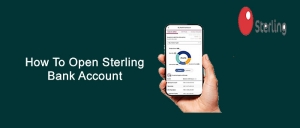
Writing a business plan is the process of documenting a comprehensive roadmap for your business. Example of such business plan are business plan online, goat farming business plan, catering business plan, building a business plan etc. It involves clearly defining your business idea, setting goals, and outlining strategies to achieve those goals by knowing these steps you can comfortably write your business plan and even become a business plan consultant.
Here are the steps involved in writing a business plan:
Executive Summary: Start with an executive summary that provides a concise overview of your business, its mission, and its unique value proposition. It should capture the reader's attention and highlight the key points of your business plan.
Company Description: Describe your company, its legal structure, location, and ownership. Provide background information about your business, its history, vision, and core values. Explain what makes your business unique and set it apart from competitors.
Market Analysis: Conduct market research to understand your target market, industry trends, customer demographics, and competition. Analyze the size of the market, identify your target customers, and assess their needs and preferences. This section helps you identify your market opportunity and position your business effectively.
Products or Services: Detail the products or services you offer, including their features, benefits, and pricing. Explain how your offerings address customer needs and solve specific problems. If applicable, discuss any intellectual property, patents, or unique technology associated with your products or services.
Marketing and Sales Strategy: Outline your marketing and sales plans to attract and retain customers. Describe your target market segments, marketing channels, pricing strategy, and promotional activities. Explain how you will reach your target audience and communicate the value of your products or services, this is a good business plan examples for students
Organization and Management: Provide information about the structure and management of your business. Describe the key roles and responsibilities of your team members, their qualifications, and relevant experience. Include an organizational chart to illustrate the hierarchy and reporting relationships.
Financial Projections: Develop financial projections that demonstrate the financial viability and sustainability of your business. Include a sales forecast, income statement, cash flow statement, and balance sheet. Identify your startup costs, operating expenses, and expected revenue streams. This section helps investors or lenders assess the financial potential of your business.
Implementation Plan: Outline the steps and timeline for implementing your business plan. Break down your goals into actionable tasks and set milestones for measuring progress. Consider potential challenges and develop contingency plans.
Risk Analysis: Identify potential risks and challenges that your business may face. Assess their potential impact and develop strategies to mitigate or manage them. This demonstrates that you have considered potential obstacles and have plans in place to address them.
Here are different business plan samples to give you an idea of what a business plan might look like for different industries and purposes:
- E-commerce Business Plan: This business plan outlines the strategy and financial projections for an online retailer selling a niche product or service.
- Restaurant Business Plan: This business plan outlines the concept, target market, menu, and financial projections for a new restaurant startup.
- boutique business plan: This business plan outlines the services, target clients, and marketing strategy for a boutique business plan.
- Fitness Center Business Plan: This business plan outlines the services, equipment, and marketing strategy for a new fitness center.
- Medical Practice Business Plan: This business plan outlines the services, target patients, and financial projections for a medical practice, such as a clinic or group practice.
- Business Plan Software: This business plan outlines the concept, target market, pricing, and financial projections for a software-company.
- Real Estate Investment Business Plan: This business plan outlines the investment strategy, financial projections, and property acquisition process for a real estate investment company.
- Laundry Business Plan: This business plan outlines the services, target market, and financial projections for a residential or commercial cleaning service.
- Travel agency business plan: This business plan outlines the concept, target market, and monetization strategy for a travel agency business plan.
- Fast Food Business Plan: This business plan outlines the mission, programs, and fundraising strategy for a fast food business plan.
- Supermarket Business Plan: This business plan outlines the mission, programs, and fundraising strategy for a Supermarket Business Plan
Note that these are just examples and there are many different types of business plans which are sample business plan for online clothing store, online marketing plan, drop shipping business plan, digital marketing plans, amazon business plan, farm business plan examples, cleaning business plan, snail farming business plan, security company business plan, tailoring business plan , depending on the industry size of the business, and intended audience
E-commerce Business Plan format
Here is a general format for an e-commerce business plan:
Executive Summary: This section provides an overview of the e-commerce business, including its products or services, target market, competitive advantage, and financial projections.
Company Description: This section provides more detail about the e-commerce business, including its history, mission, and legal structure.
Market Analysis: This section outlines the target market for the e-commerce business, including customer demographics, buying habits, and competition. It also includes a SWOT analysis.
Products or Services: This section provides an overview of the e-commerce business's products or services, including their features, benefits, and pricing.
Marketing and Sales Strategy: This section outlines the e-commerce business's marketing and sales tactics, including its online advertising, social media, email marketing, and search engine optimization (SEO) strategies.
Operations Plan: This section outlines the e-commerce business's operations, including its website development, inventory management, shipping and logistics, and customer service.
Financial Projections: This section includes the e-commerce business's financial projections, including revenue, expenses, and profitability. It also includes a break-even analysis and cash flow projections.
Funding Requirements: This section outlines the e-commerce business's funding requirements, including startup costs and ongoing working capital needs. It also includes information on potential sources of funding, such as loans or investors.
Conclusion: This section summarizes the key points of the e-commerce business plan and emphasizes the potential for success.
Note that the format may vary depending on the specific e-commerce business and its goals. The important thing is to provide a clear and detailed plan that demonstrates the potential for success and outlines a clear path forward.
Restaurant Business Plan
Here is an example format for a restaurant business plan:
Executive Summary: This section provides an overview of the restaurant, including its concept, target market, competitive advantage, and financial projections.
Company Description: This section provides more detail about the restaurant, including its history, mission, and legal structure.
Market Analysis: This section outlines the target market for the restaurant, including customer demographics, buying habits, and competition. It also includes a SWOT analysis.
Menu: This section provides an overview of the restaurant's menu, including the types of dishes offered, the style of cuisine, and the pricing.
Marketing and Sales Strategy: This section outlines the restaurant's marketing and sales tactics, including its advertising, social media, email marketing, and influencer outreach strategies.
Operations Plan: This section outlines the restaurant's operations, including its location, layout, staffing, and supply chain.
Financial Projections: This section includes the restaurant's financial projections, including revenue, expenses, and profitability. It also includes a break-even analysis and cash flow projections.
Funding Requirements: This section outlines the restaurant's funding requirements, including startup costs and ongoing working capital needs. It also includes information on potential sources of funding, such as loans or investors.
Conclusion: This section summarizes the key points of the restaurant business plan and emphasizes the potential for success.
Note that this is just an example format and there may be variations depending on the specific restaurant and its goals. The important thing is to provide a clear and detailed plan that demonstrates the potential for success and outlines a clear path forward.
Laundry Business Plan
Executive Summary:
[Your Laundry Business Name] is a full-service laundry and dry cleaning business located in [City], serving both residential and commercial customers. Our mission is to provide high-quality laundry services with exceptional customer service, convenience, and affordability. With state-of-the-art equipment, a skilled team, and a commitment to sustainability, we aim to become the premier laundry service provider in the area.
Market Analysis:
[City] has a population of [population size] and a thriving residential and commercial sector. After conducting market research, we have identified a demand for reliable and convenient laundry services. Our target market includes busy professionals, families, students, and businesses seeking professional laundry solutions. We have identified several key competitors but believe our commitment to quality, convenience, and customer satisfaction wil
Business Structure and Organization:
[Your Laundry Business Name] will operate as a limited liability company (LLC) with [Owner/Founder] as the primary owner and manager. We will have a team of experienced laundry professionals responsible for managing day-to-day operations, customer service, and quality control.
Services and Pricing:
We will offer a range of services to cater to different customer needs, including wash and fold, dry cleaning, ironing, and garment repairs. Our pricing will be competitive and based on market research, ensuring affordability for our target market while maintaining profitability for the business. We will also offer flexible pricing options, such as monthly subscription plans and discounts for loyal customers.
Marketing and Sales Strategy:
To attract customers and build brand awareness, we will implement a multi-channel marketing strategy. This will include online marketing through social media platforms, a user-friendly website with online booking options, targeted digital advertising, and local partnerships with hotels, gyms, and businesses. We will also implement a referral program to incentivize word-of-mouth marketing and customer loyalty.
Operations:
Our laundry facility will be located in a convenient and easily accessible area, equipped with modern, energy-efficient laundry machines and environmentally friendly detergents. Our workflow will be streamlined to ensure efficient processing of laundry, from drop-off to sorting, washing, drying, folding, and packaging. We will prioritize quality control and invest in staff training to maintain high standards.
Financial Projections:
Based on our financial projections, we anticipate steady growth in revenue over the first three years. Our startup costs include leasehold improvements, equipment purchases, marketing expenses, and initial inventory. We project a positive cash flow by the end of the first year, reaching profitability in the second year. We will continuously monitor our financial performance and make adjustments as needed to ensure sustainable growth.
Risk Analysis:
We have identified potential risks such as equipment breakdowns, labor shortages, and fluctuations in utility costs. To mitigate these risks, we will implement preventive maintenance programs, establish backup equipment arrangements, and invest in staff development. We will also maintain a cash reserve for unforeseen circumstances.
Conclusion:
[Your Laundry Business Name] is poised to capitalize on the growing demand for laundry services in [City]. With a customer-centric approach, quality services, and strategic marketing, we are confident in our ability to establish a strong presence in the market. Our focus on customer satisfaction, convenience, and environmental sustainability will set us apart and drive long-term success.
Business Plan Software
There are several business plan software options available in the market. Here is an example of a popular business plan software:
Software: LivePlan
Overview:
LivePlan is a comprehensive business planning software designed to assist entrepreneurs and small businesses in creating professional business plans. It offers a user-friendly interface and a range of features to guide users through the process of developing a well-structured and persuasive business plan.
Key Features:
Step-by-step guidance: LivePlan provides a step-by-step process to help users create each section of their business plan. It offers instructional videos, examples, and prompts to ensure all key elements are covered.
Customizable templates: The software offers a variety of customizable business plan templates to cater to different industries and business types. Users can select a template that aligns with their specific needs and make adjustments to suit their business.
Financial forecasting tools: LivePlan includes built-in financial forecasting tools that allow users to create financial projections, such as income statements, balance sheets, and cash flow statements. The software performs calculations automatically based on the user's inputs.
Collaboration and sharing: Multiple team members can collaborate on the business plan using LivePlan. It enables real-time collaboration, allowing team members to provide feedback, make edits, and track changes. Users can also easily share the final plan with stakeholders.
Pitch creation: LivePlan assists users in creating compelling pitch presentations by extracting key data from the business plan. It provides professional pitch deck templates and helps users emphasize the most critical aspects of their business to attract potential investors.
Performance tracking: The software enables users to track their business's performance against the projected financials. Users can input actual financial data and compare it with the forecasted figures, helping them assess their progress and make informed decisions.
Integration with other platforms: LivePlan integrates with popular accounting software like QuickBooks, allowing users to import financial data directly into their business plan. This feature streamlines the process of updating financial information and ensures accuracy.
Benefits:
- User-friendly interface and intuitive navigation.
- Saves time by providing pre-built templates and guiding prompts.
- Enables collaboration and input from team members.
- Assists in creating compelling pitches for potential investors.
- Provides financial forecasting and tracking tools for better financial management.
- Offers flexibility to customize the plan based on specific business needs.
Please note that there are other business plan software options available in the market, each with its own set of features and benefits. It's recommended to research and compare different software options to find the one that best suits your specific requirements.
Software Business Plan
Below is an example of a software business plan:
Executive Summary:
The executive summary provides an overview of the software business, its mission, and its unique value proposition. It includes a brief description of the software product or service offered, the target market, and the projected growth and revenue.
Company Description:
This section provides detailed information about the software company, including its legal structure, location, founding team, and key personnel. It highlights the company's background, vision, and core values.
Market Analysis:
The market analysis section assesses the target market for the software product or service. It includes a thorough examination of the industry landscape, market trends, customer demographics, and competitive analysis. It also identifies the software's unique selling points and market differentiation.
Product Description:
Here, the software product or service is described in detail. It outlines its features, functionalities, and benefits. It explains how the software addresses customer pain points and solves specific problems. It may include screenshots or visual representations of the software.
Marketing and Sales Strategy:
This section outlines the marketing and sales approach for promoting the software product. It includes the target customer segments, marketing channels, pricing strategy, and promotional activities. It also details the sales process, customer acquisition tactics, and customer retention strategies.
Development and Operations:
This section focuses on the software development and operational aspects. It outlines the development methodology, technology stack, and resources required for software development. It highlights any strategic partnerships, intellectual property considerations, and potential scalability challenges.
Management and Organization:
This section provides information about the management team and organizational structure of the software company. It includes the qualifications and roles of key personnel, their relevant experience, and their contributions to the business. It may also mention any advisors or mentors associated with the company.
Financial Projections:
The financial projections section presents the anticipated financial performance of the software business. It includes a comprehensive sales forecast, revenue projections, cost analysis, and profitability assessment. It may also outline the funding requirements, sources of funding, and expected return on investment.
Risk Analysis:
This section identifies and assesses potential risks and challenges that the software business may face. It includes a risk management plan and contingency strategies to mitigate those risks. It may cover factors such as competition, technology disruptions, legal and regulatory considerations, and market volatility.
Conclusion:
The conclusion summarizes the key points of the software business plan, reiterates the market opportunity, and emphasizes the software's competitive advantages. It outlines the next steps, such as product development milestones, marketing initiatives, and financial goals.
Coffee Shop Business Plan
Executive Summary:
The executive summary provides an overview of the coffee shop business plan, summarizing the key points and goals of the business. It includes a description of the coffee shop concept, target market, unique selling proposition, and financial projections.
Company Description:
This section provides detailed information about the coffee shop, including its name, legal structure, location, and ownership. It outlines the mission, vision, and values of the coffee shop, as well as its unique features and offerings that differentiate it from competitors.
Market Analysis:
The market analysis section assesses the target market for the coffee shop. It includes a description of the local area, target customer demographics, market trends, and competition. It highlights the demand for coffee and the specific needs and preferences of the target customers.
Products and Services:
Here, the coffee shop's products and services are described in detail. It includes the coffee menu, specialty drinks, food offerings, and any additional services, such as catering or events. It emphasizes the quality of the coffee, the sourcing of ingredients, and any unique or signature offerings.
Marketing and Sales Strategy:
This section outlines the marketing and sales approach for promoting the coffee shop. It includes the target customer segments, marketing channels, pricing strategy, and promotional activities. It discusses branding, advertising, online presence, loyalty programs, and partnerships with local businesses or organizations.
Operations and Management:
This section focuses on the operational aspects of the coffee shop. It outlines the physical layout and design of the shop, equipment and technology needed, staffing requirements, and supplier relationships. It also discusses the management team and organizational structure, highlighting key roles and responsibilities.
Financial Projections:
The financial projections section presents the anticipated financial performance of the coffee shop. It includes a sales forecast, revenue projections, startup costs, operating expenses, and profitability analysis. It may also include a break-even analysis and a plan for funding, such as investment or loans.
Risk Analysis:
This section identifies and assesses potential risks and challenges that the coffee shop may face. It includes a risk management plan and strategies to mitigate those risks. It may cover factors such as competition, changes in consumer preferences, staffing issues, or external factors like economic conditions.
Sustainability and Social Responsibility:
This section discusses the coffee shop's commitment to sustainability and social responsibility. It may include information about eco-friendly practices, waste management, responsible sourcing, community involvement, and charitable initiatives.
Below is a sample outline for a boutique business plan:
Executive Summary:
- Overview of the boutique concept and its unique selling proposition
- Mission statement and key objectives
- Financial summary and growth projections
Company Description:
- Name, legal structure, and ownership details of the boutique
- Location and target market demographics
- Brief history, vision, and values of the boutique
Market Analysis:
- Overview of the fashion industry and current trends
- Target market segmentation, including age, gender, and style preferences
- Analysis of local competition and their strengths/weaknesses
Products and Services:
- Description of the boutique's product offerings, such as clothing, accessories, and footwear
- Emphasis on the unique aspects, quality, and style of the merchandise
- Additional services, if any, such as personal styling or alterations
Marketing and Sales Strategy:
- Identification of the target audience and effective marketing channels to reach them
- Pricing strategy and positioning relative to competitors
- Promotional activities, including advertising, social media, and partnerships
Operational Plan:
- Overview of the boutique's physical layout and interior design
- Inventory management and sourcing strategies
- Staffing requirements, roles, and responsibilities
Financial Projections:
- Sales forecast, including monthly and yearly projections
- Cost analysis, including inventory, rent, utilities, and salaries
- Break-even analysis and return on investment projections
Risk Analysis:
- Identification of potential risks and challenges, such as changing fashion trends or economic downturns
- Contingency plans to address these risks
- Strategies for managing inventory and adapting to market shifts
Sustainability and Social Responsibility:
- Commitment to ethical sourcing, sustainable materials, or fair trade practices
- Involvement in local community initiatives or charitable partnerships
Conclusion:
- Summary of the key points and goals outlined in the boutique business plan
- Reiteration of the boutique's competitive advantage and growth potential
- Next steps for implementation, including securing funding, finding suppliers, and marketing strategies
Remember, this is just a sample outline, and the content and structure should be tailored to your specific boutique
Below is a sample outline for a cosmetics business plan:
Executive Summary:
- Overview of the cosmetics business, including the mission statement and key objectives
- Summary of the products or services offered and unique selling proposition
- Financial summary and growth projections
Company Description:
- Name, legal structure, and ownership details of the cosmetics business
- Location and target market demographics
- Brief history, vision, and values of the business
Market Analysis:
- Overview of the cosmetics industry, including market size and growth trends marketing strategy in business plan
- Analysis of the target market, including consumer preferences and purchasing behavior
- Competitive analysis, highlighting key competitors and their strengths/weaknesses
Products and Services:
- Description of the cosmetics products or services offered, such as skincare, makeup, or fragrance
- Emphasis on the unique features, benefits, and quality of the products
- Overview of any proprietary formulations or special ingredients used
Marketing and Sales Strategy:
- Identification of the target audience and effective marketing channels to reach them
- Pricing strategy, considering market competition and positioning
- Promotional activities, including digital marketing, social media, influencer partnerships, and events
Operational Plan:
- Overview of the cosmetics business's physical location, including store layout or e-commerce platform
- Sourcing strategies for products and suppliers, ensuring quality and reliability
- Staffing requirements, roles, and responsibilities, including hiring and training plans
Financial Projections:
- Sales forecast, including monthly and yearly projections
- Cost analysis, including product sourcing, marketing expenses, rent, and utilities
- Break-even analysis and return on investment projections
Risk Analysis:
- Identification of potential risks and challenges, such as market competition or regulatory compliance
- Contingency plans to address these risks and mitigate their impact
- Strategies for inventory management and adapting to market trends
Sustainability and Social Responsibility:
- Commitment to ethical sourcing, eco-friendly packaging, or cruelty-free practices
- Involvement in community initiatives or charitable partnerships
Conclusion:
- Summary of the key points and goals outlined in the cosmetics business plan
- Reiteration of the business's competitive advantage and growth potential
- Next steps for implementation, including securing funding, product sourcing, and marketing strategies
Remember, this is just a sample outline of business plan examples for students entrepreneurship, and the content and structure should be customized to your specific cosmetics business. Conduct thorough market research, financial analysis, and strategy development to create a comprehensive and tailored cosmetics business plan that reflects your unique vision and goals.
Inconclusion, a good business plan is an essential tool for any aspiring entrepreneur or existing business owner. It provides a comprehensive roadmap for your business, guiding your decisions and actions towards success. We believe this article will help you to gain a good insight on how to write a workable business plan to grow and become successful in your operational plan in business plan







 How To Buy Global Com Shares
How To Buy Global Com Shares  Top Places To Invest Your Money To Make Billions
Top Places To Invest Your Money To Make Billions  How To Get Citibank Credit Card
How To Get Citibank Credit Card